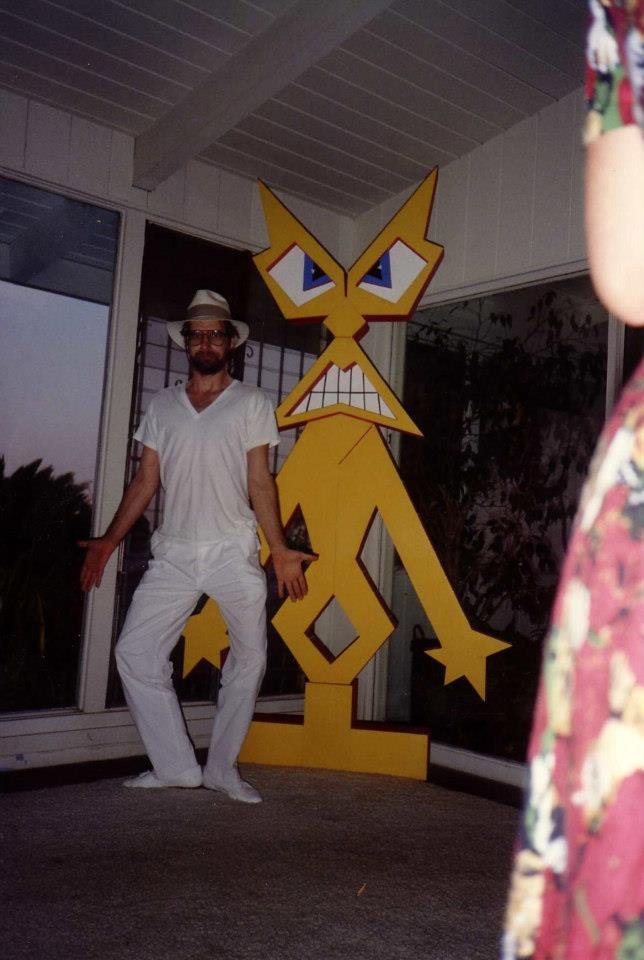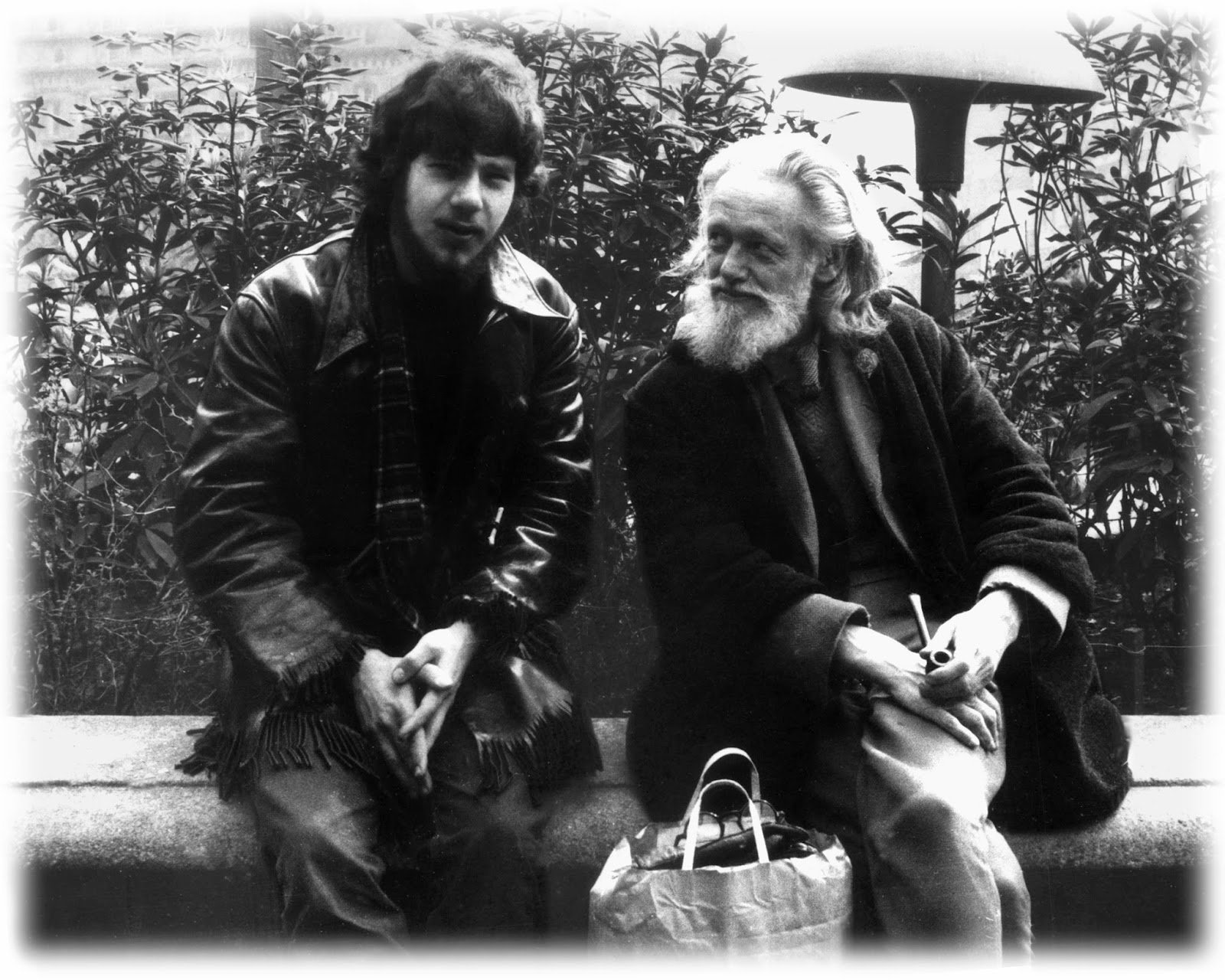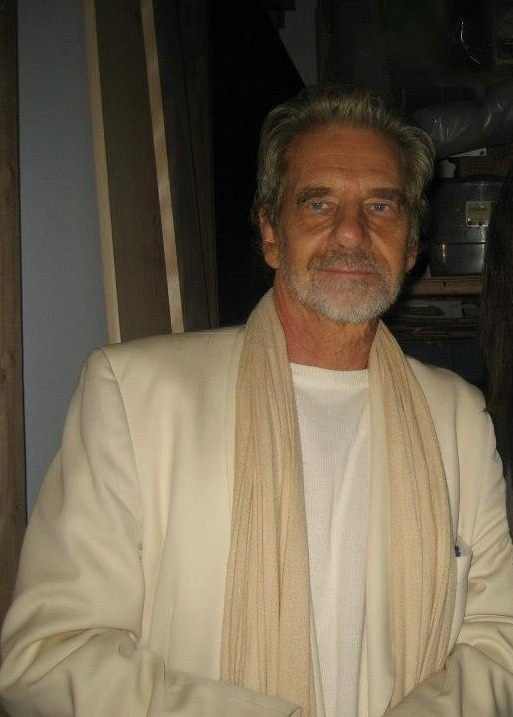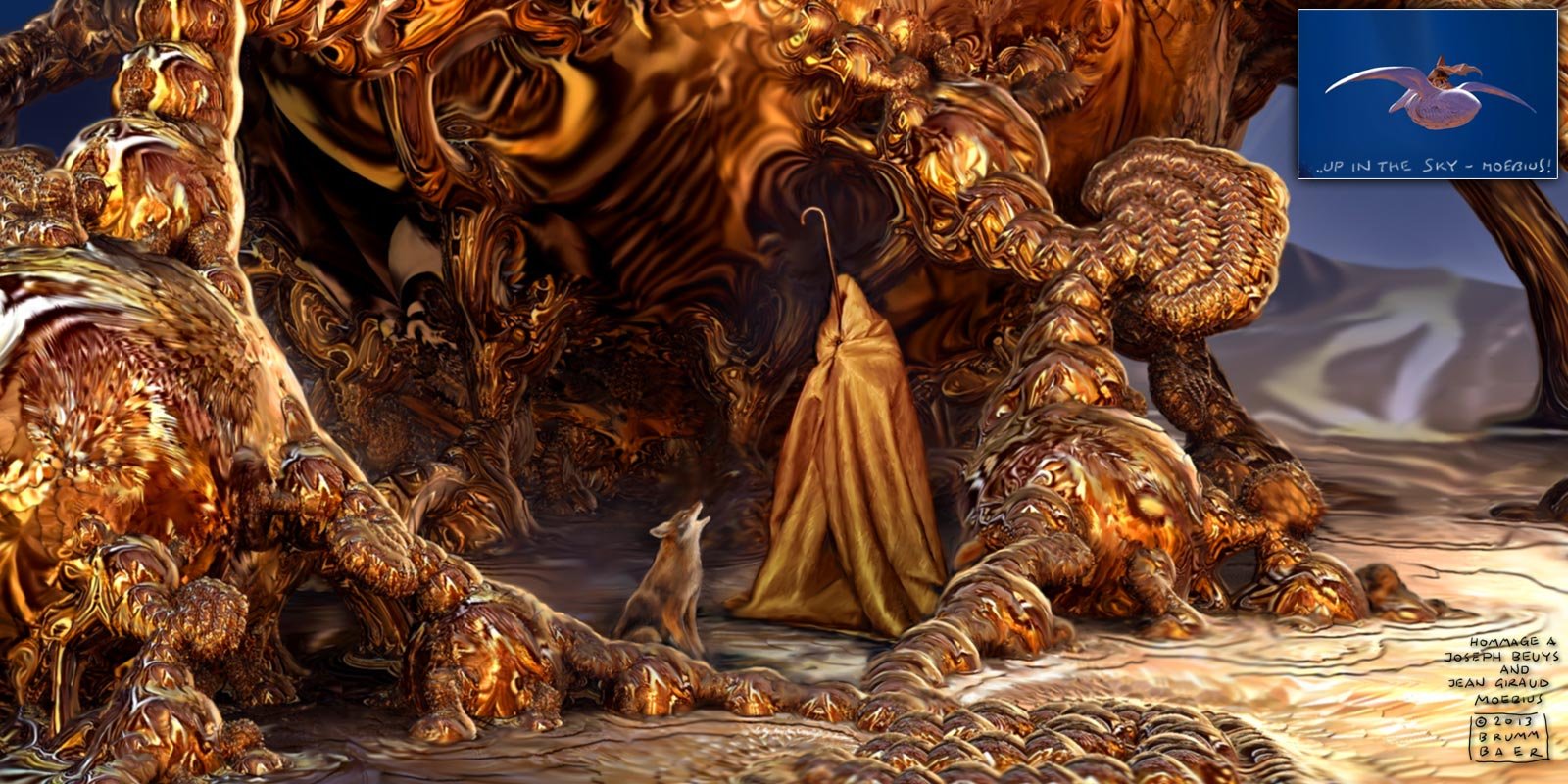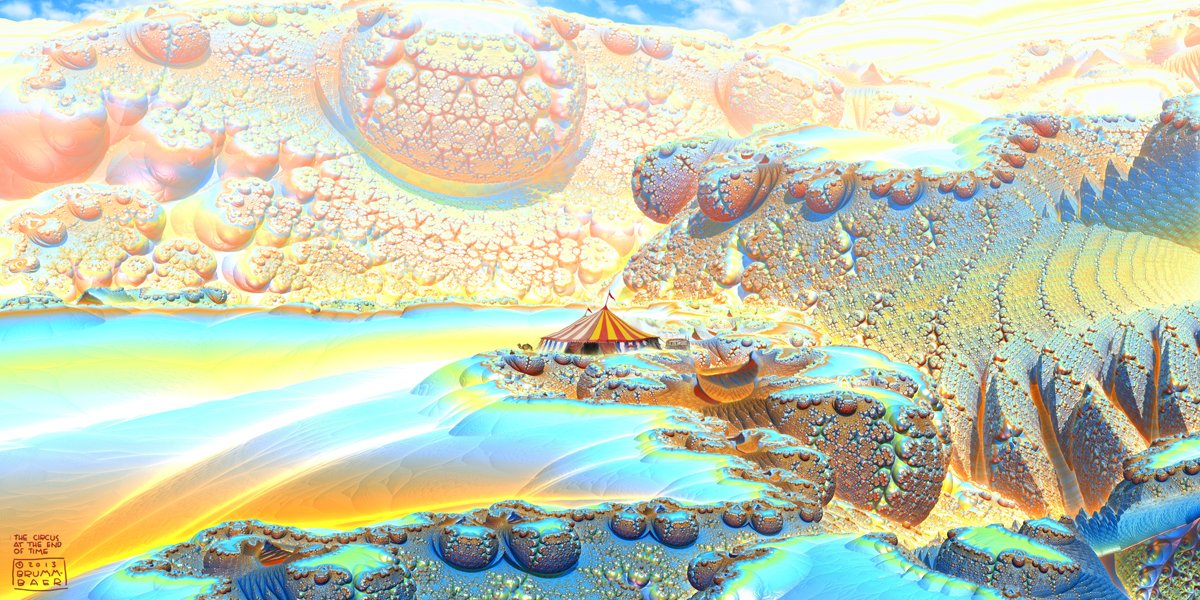Brummbaer Artist Book Project
Bookcover / JHC
Brummbaer was a pioneer, a magi and a visionary artist. His fractal paintings and prints are a fusion of new digital art and old master painting techniques. His video art delves into the cyber wilderness, a new frontier of technology and imagination, creating breathtaking visuals, intricate fractal sculptures and stunning electronic architectures.
Brummbaer is, like the Greek Phidias, the Italian Giotto, the Dutch Rembrandt, one of the first masters of this new art medium.
He is one of the first Wizard Fabricators of the cybernetic realities of the 21st century.
-Timothy Leary
From a chalk wielding pavement artist to a master computer wizard, Brummbaer’s artistic journey encompassed in similar ways the history of artmaking that began with simple animal paintings on cave walls to dizzying wonders of technology-driven highly complex art shimmering on the electronic screens of the 21st century. Born in 1945 and raised in post-war Germany, he made the move to Los Angeles, California which served as his artistic home base since the mid-1980s.
Raised by a single mom and in poverty, he recalled the growing up experience in post-war Germany with a sense of grimness. He found meaning and refuge early on in art. At age 15, he climbed into an empty picture frame at an art happening and saw himself as entering the world of art. Thus began his art-fueled life as a self-taught vagabond pavement artist in post-war Germany. Akin to itinerant Italian maddonari artists of olden days, he travelled all over Europe, painting with colored chalk the famous European paintings - of Rubens, Rembrandt, Raphael, El Greco and others.
Unable to afford and attend art school, he taught himself. Learning from his art school peers and from books and museums, the street was his canvas. Attracted to the peace- and-love hippie culture of the 1960s emerging in London and elsewhere, he led an adventurous life, living on the road for several years in search of a life of utopian ideals where drugs, rock-n-roll and adventure were a big part of.
The carefree life collided with the law at times resulting in imprisonments in the infamous Stadelheim prison in Munich and Wormwoods Scrubs in London and destitute street living. But it was also wild, heady times - creating psychedelic art and crafting immersive light shows at concerts for bands such as Pink Floyd, Tangerine Dream, Frank Zappa and many more and travelling to many places where artful life was brewing - listening to Allen Ginsberg where beat poets congregated, falling in love with jazz music, marveling at late night flamenco dancers in Amsterdam, communal living and creative collaborations with other artists.
His career was wide-ranging - as illustrator, light show designer, political agitprop creator, introducing Robert Crumb to German audience, launching Brumm comix, launching underground art magazine Germania, creating experimental radio plays, working as a TV set designer, actor, filmmaker and graphic artist. The introduction of the computers in the late 1970s decisively shaped his path as he wholeheartedly embraced the use of the computer as a new medium of art.
An early practitioner and pioneer in the digital art, he was invited to Los Angeles, California in 1985 to work on the first ever graphics computer, the Fairlight CVI. He also worked with Timothy Leary and science fiction writer William Gibson. He continued expanding his digital skills and worked in special effects for Hollywood movies, creating digital art for the video game industry and in the later years obsessively exploring fractal-based art and animation.
Homage to Joseph Beuys and Jean Giraud Moebius, Brummbaer 2013
The Tralfamadore Series started in 2010, inspired by the writer Kurt Vonnegut, are a bold and imaginative flight of visionary art. At age 65, his focus turned towards combining the fractal-based art with animation, rendered with mastery of color and masterful techniques. With the newly developed fractal-based Mandelbulb 3D software, he delved into a new world of possibility. More than eye popping and heretofore unseen visions, his art invites one to see beyond the fantastic sights and to ponder whether art can serve as a portal to a metaphysical dimension. Ever humble and wildly talented, Brummbaer likened the role of artist to a window washer, shining the thick dust off the windows of reality so humanity can see what has always been there.
The Circus at the End of the Universe, Brummbaer 2013
The onset of cancer in his mid-fifties brought challenges and change of focus. The double bouts of cancer had ended his commercial career, creating an opportunity to work on his artistic vision. After writing two memoirs to shed light on his coming of age in the 1960s, he embarked on his work with full gusto. Though in the sunset of his age, he was unstoppable as an artist. From works in film, print and animation, he contributed in groundbreaking ways to the field of new media art, boldly transforming it with new tools of computer and software which he compared to a philosopher’s stone and the magic carpet. And boldly he contributed to the new media art canon the stunning visions flickering before our eyes.
Contributor: Jennifer Hyong Un Cho is currently working on an artist book on Brummbaer: Pioneering New Media Artist, a web-based archive which she hopes to also make into an art book. She presented the The Everchanging Infinite Bliss exhibit featuring his work at Irisphere Visual Arts in 2012. If you would like to support this project, please contact me at art@irisphere.com or donate to art@irisphere at Paypal or Zelle.


